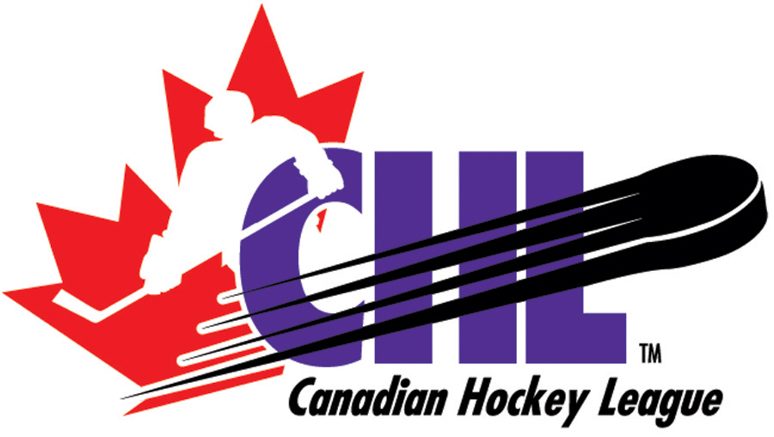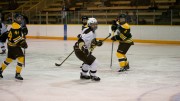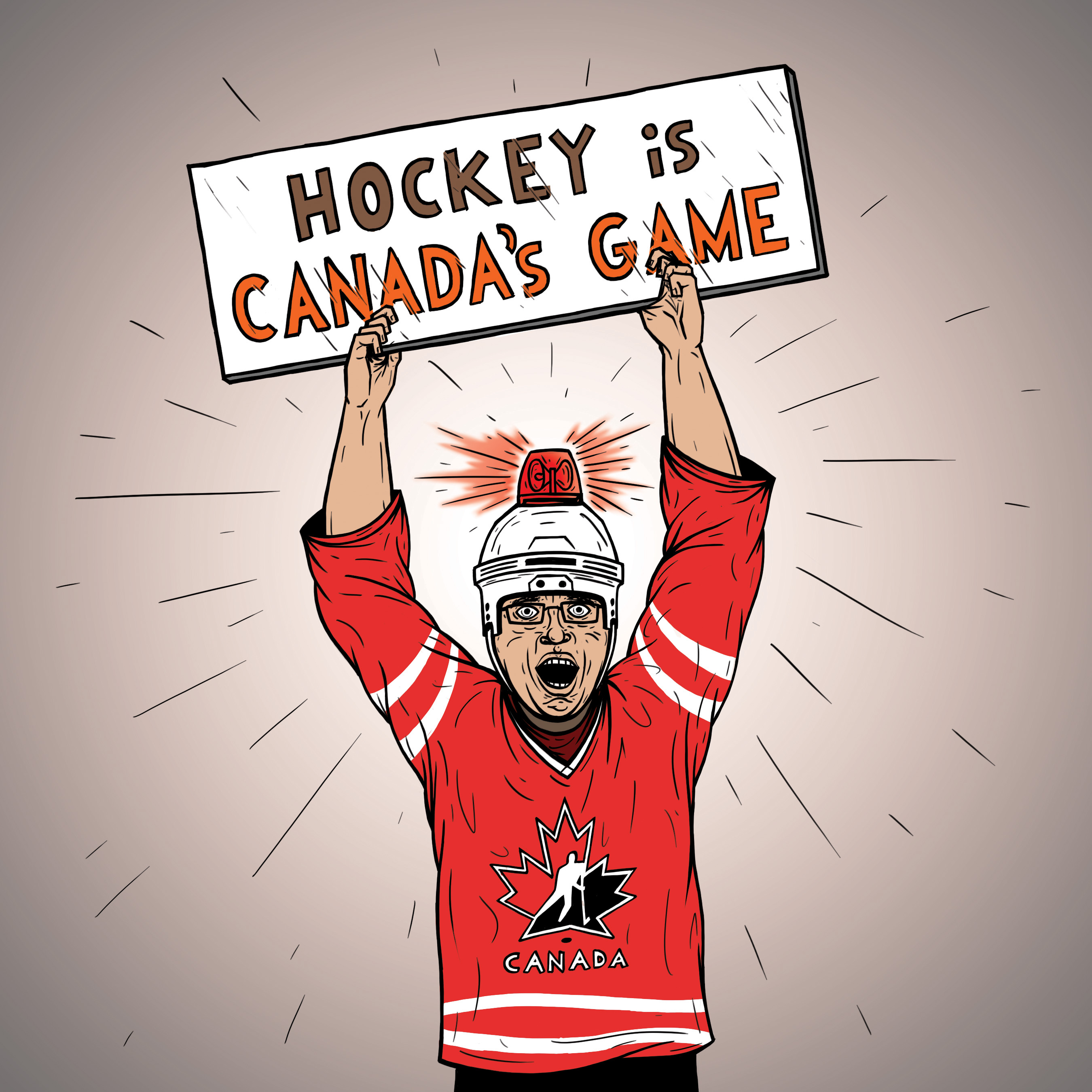Tensions are brewing in the country’s top level of junior hockey. Former players from the Western Hockey League (WHL), the Ontario Hockey League (OHL), and the Quebec Major Junior Hockey League (QMJHL) are coming together to take on their governing body, the Canadian Hockey League (CHL).
On one side, you have the players, current and former, who argue that they should be paid minimum wage by the owners of their teams, and that the standard player agreement signed by every player should be considered an employment contract.
On the other side you have the league brass and team owners, who argue that the nature of minimum wage across the areas covered by the three leagues, and the actual financial viability of the organizations, makes the move to paying players prohibitive. This is especially true when you consider the WHL, which not only includes the western provinces but teams from the United States as well.
There are actually three connected class action suits taking place in Alberta, Ontario, and Quebec. The suits involving meal break violations against the WHL and OHL are being handled by the same law firm, Charney Lawyers, while the QMJHL suit is being handled by a Quebec-based firm. Unfortunately little information has come out about the QMJHL suit, though it is still ongoing.
The plaintiffs: CHL players past and present
The argument posed by the players in the class action suit against the CHL is quite simple: hard work should beget fair pay.
The suit was originally launched in 2014, and argued that players should be considered employees deserving of minimum wage. Players play, practice, travel, and appear at events, just like their professional counterparts, but do not receive any compensation for it. With seemingly even the smallest CHL teams making around two million dollars in revenue a year, it has been argued by Ted Charney – the class action lawyer in charge of the suit – that it would cost franchises in the range of $300,000 annually to pay players.
A copy of the motion for certification filed by the plaintiffs was released on their website which details their exact requests. In sum they would like the court to determine if the players could be considered employees, and thus if by not paying them the owners are in violation of the Applicable Employment Standards Legislation of the Employment Standards Act.
Further, the motion calls on the court to decide if the current and former players involved in the suit are entitled to wages, overtime, vacation pay, and punitive damages for essentially working for free.
The plaintiffs gained backing early on when a study by Kevin Mongeon of Brock University was commissioned by Charney and his legal team. In the study, Mongeon valued the Ottawa 67’s – the most valuable OHL team – at $55 million with the Edmonton Oil Kings being the most valuable WHL franchise at $51 million. However, he admitted the study was not entirely scientific, as at the time no concrete numbers existed to determine the value of teams. The study did not contain numbers on QMJHL teams, as a different law firm is handling the case in Quebec.
The study was also scrutinized due to its valuation of the OHL superpower London Knights, who consistently fill all 9,000 seats and 38 luxury boxes of the $42 million dollar John Labatt Centre.
Mongeon estimated that ticket sales would draw in $2-10 million in revenue, along with the revenue generated by sponsorships and concessions. This would allow the clubs to pay their 24 players for 40 hours a week across the season’s 25-week schedule. This would result in $281,250 per year in wages at Ontario’s $11.25 an hour minimum wage.
The defendants: the leagues and owners
The other side of the suit is made up of team owners and the commissioners of the CHL, WHL and OHL. They argue that the leagues simply don’t make enough money, across all teams, for paying minimum wage to be feasible. Likewise they argue that the compensation package they provide players in terms of scholarships should be payment enough for the privilege to chase their dream at the highest junior level.
The defendants argue that junior teams don’t make enough money for it to be possible. Sure, some teams like the Kitchener Rangers, the Quebec Ramparts – who sell out their 13,000 seat arena almost nightly – and the Edmonton Oil Kings could take the hit and still be somewhat profitable. However, smaller budget teams like the Swift Current Broncos – valued at just $970,000 by Mongeon – would go bankrupt.
They also contend that CHL players are in fact just student athletes, such as those in the NCAA and their high school counterparts. Players do in fact qualify for a monthly stipend, along with various scholarships upon aging out of the various leagues. The stipend the defendants keep referring back to throughout court proceedings only amounts to about $40 weekly after taxes, meaning players technically make a whopping $1 per hour.
That money doesn’t really go that far, even for the thriftiest of players. In 2012, Cam Charron of Yahoo Sports tried keeping track of his own expenses to see if he could live on a stipend budget for a week and found, living very conservatively and excluding expense that would theoretically be covered by billet families, he’d spent $38.19 in that time.
WHL commissioner Ron Robison appeared on Hockey Central at Noon to discuss the case and the report commissioned by the defendants.
“The majority of our teams either break even or lose money every season,” Robison said. “We’re very concerned as to the precedent that this would set. It’s not only about the Canadian Hockey League, it’s about amateur sport in this country, and we need to protect the interests of these athletes.”
“If you were to add minimum wage to the package we provide the players, including the scholarship program, 80 per cent of our teams in the OHL and WHL would be in a loss position,” Robison added.
“I think as everyone is fully aware, many of our markets across the country and Canadian Hockey League are in small centres, many of which are under 1,000 in population. Many of our smaller markets would have a hard time operating.”
Where to go from here
On Oct. 28, 2016 a Calgary judge filed a decision which would set the stage for the case moving forward. In the decision, Justice R.J. Hall ordered that all financial documents be made available to the plaintiffs.
“The defendants’ evidence has rendered these records relevant to the issues on certification, and necessary to supplement their affidavit evidence,” Justice Hall said.
“If I limited the financial production to those teams where owners or managers were affiants, it would allow the defendants to cherry-pick which teams provide financial statements and which do not.”
However this only extends to all WHL teams, as many OHL clubs are not listed as affiants. Justice Hall added that there is a way their records could be requested.
“If the defendants intend to use and rely on affidavits from OHL team representatives in this Alberta action, then all OHL teams must also provide the requested financial information,” Justice Hall said in the decision.
This decision by Justice Hall now makes all financial records of the WHL teams, and those from OHL teams listed as affiants or being used as evidence in defense, available to the plaintiffs in building their case. This represents a major step forward in this case, as before the players and their legal team had to rely on estimates of ticket sales and team value.
Certification hearings for the case begin in Calgary, running from Feb. 7-10, with the OHL certification hearings taking place in March. If the case is certified then legal action will move forward.
Whatever happens in the coming weeks, and in the case as a whole, has the potential to massively shake up junior hockey in this country.
The CHL is still the largest producer of homegrown NHL talent, and that will not change. It doesn’t matter which side you fall on; this case will be massive, not just for the leagues and their players, but Canadian hockey for years to come.





